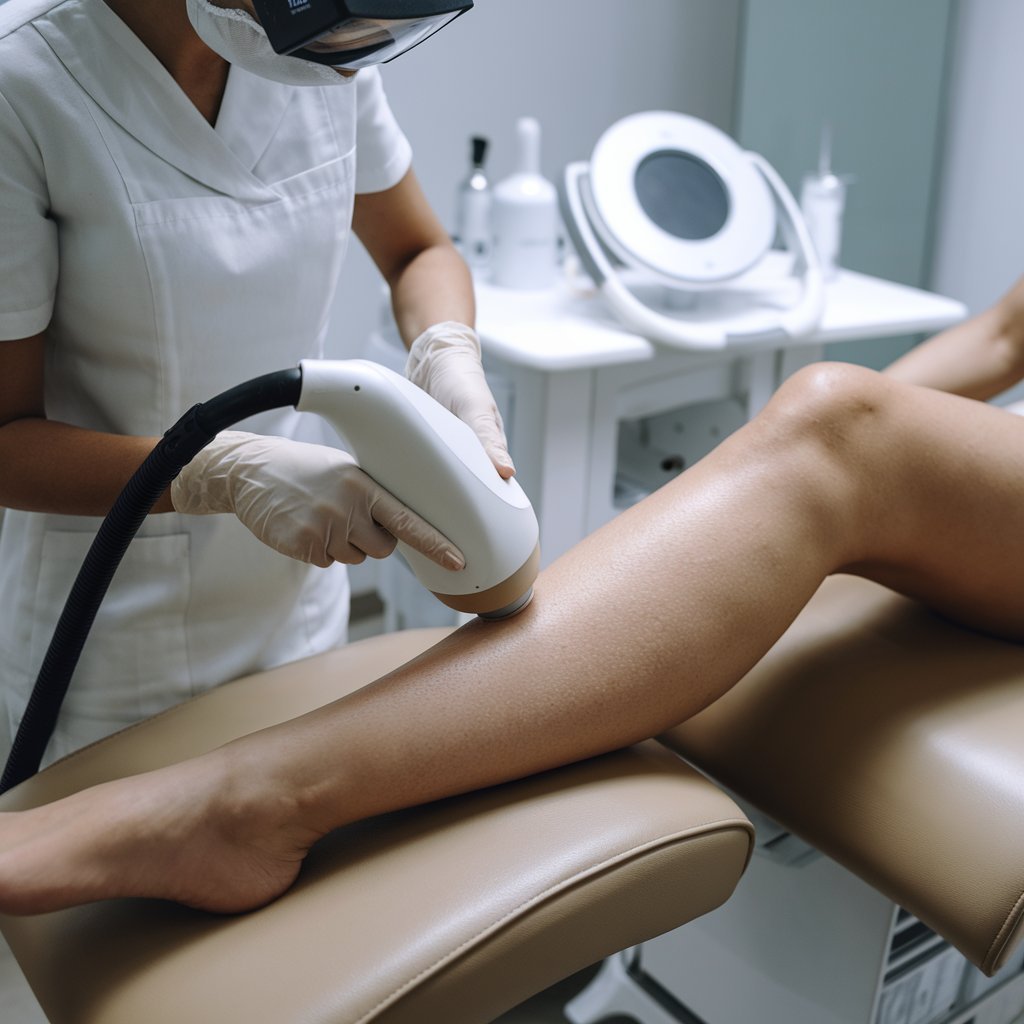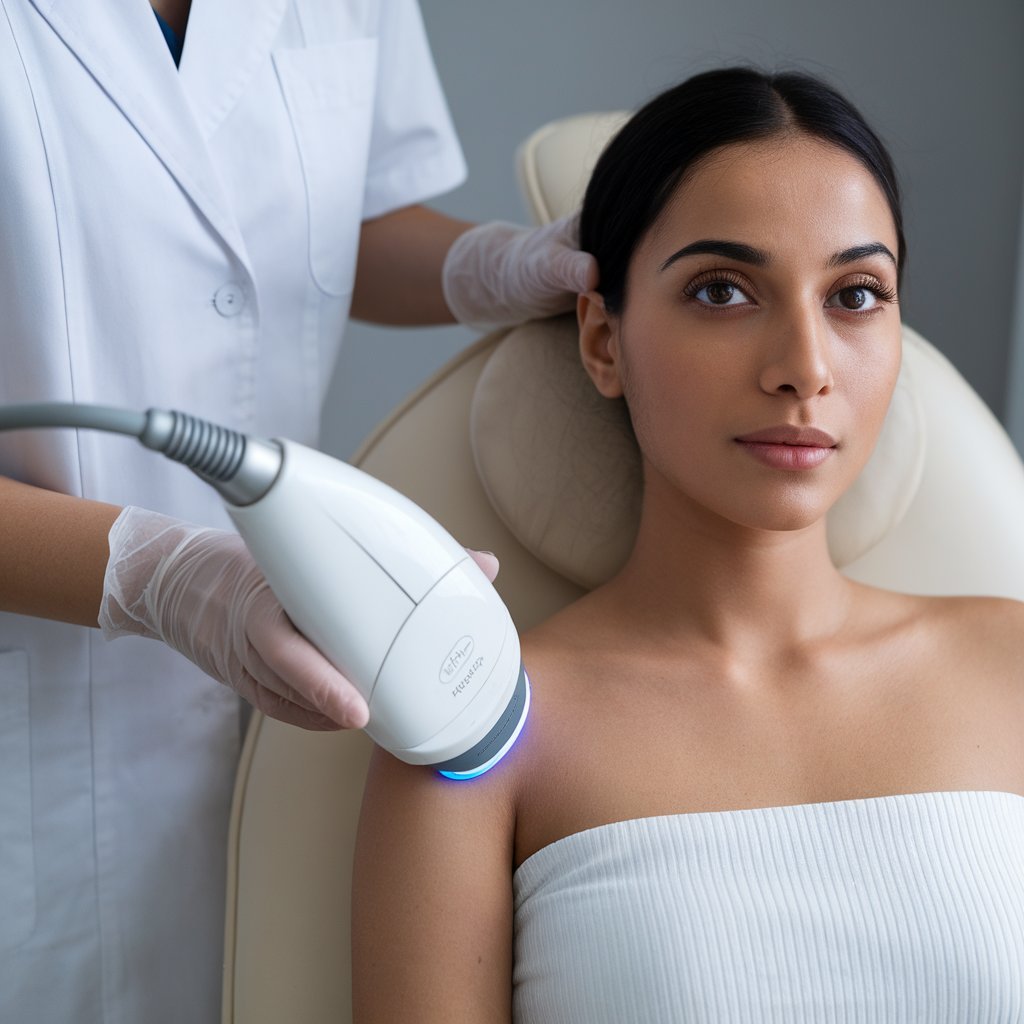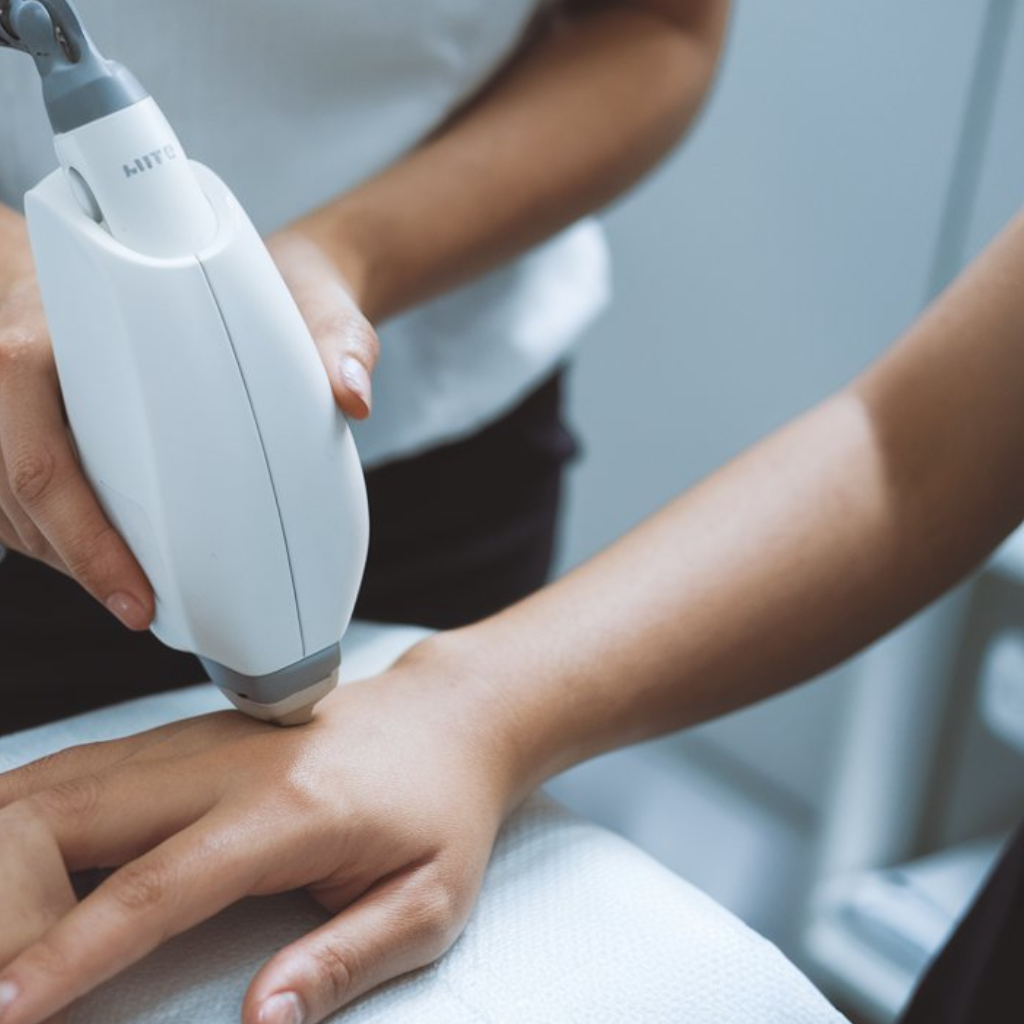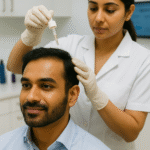What to Do After the First Laser Hair Removal Treatment
- Home
- Laser Hair Removal
- what to do after first laser hair removal treatment

Congratulations on your first laser hair removal session. You might notice slight redness or feel a warm tingling for a short while, which is entirely normal. Many people wonder what to expect after one laser hair removal treatment. Your skin will need extra love and gentle care, especially in the early days.
Why Laser Treatment for Hair Removal Is a Game-Changer
Laser treatment for hair removal targets hair follicles so they eventually stop producing hair. In the beginning, small hairs often still appear, then shed after a couple of weeks. Results can vary, but over multiple sessions, most folks see dramatic reductions in unwanted hair. Patience truly matters here.
Get the Basics on Hair Removal Treatments
People have tried all sorts of hair removal treatments, like waxing or shaving, for years. Lasers are different because they focus on the pigment inside the hair. When done correctly, the laser beam goes through your skin without hurting it. Then it destroys the hair root from within, helping delay or reduce regrowth significantly.
Some folks worry about pain, but modern cool-tip devices usually make sessions more comfortable. If you are nervous, talk openly to your technician. They might offer numbing creams or suggest short breaks. Comfort levels matter, and being honest ensures a better experience when getting laser hair removal treatment.
Expect Realistic Results from Your Laser Hair Removal Session
In the first session, you might see some changes after the initial redness fades. Hairs may appear to grow, then fall out. Do not panic if certain spots seem patchy or if a few stubborn hairs remain. Expect them to thin gradually over several sessions. Your doctor will recommend an ideal schedule for your next laser session.
Also, avoid measuring progress daily. Results vary because hair grows in stages. You may need around six to eight appointments to tackle all growth cycles. No single session can catch every follicle at its active phase, so consistency is key. Each visit builds on the progress from the previous one.
Comparing Traditional Methods with Laser Treatment
Classic methods like waxing, plucking, or threading remove hair from the outside, often causing irritation and quick regrowth. Laser treatment for hair removal actually stops or slows growth at the source. For many, that means fewer bumps, less razor burn, and a significant reduction in overall maintenance.
Sometimes people compare the cost of laser sessions to years of buying strips or blades. In the long run, many find lasers more cost-effective. It can also be a confidence booster. By not constantly worrying about pesky hairs, more time is freed up for other things that matter in your life.
Laser Hair Removal Aftercare: Nurturing Your Skin
Proper laser hair removal aftercare helps soothe the skin after laser hair removal. The treated area can feel tender, so be gentle. In humid weather or strong sunlight, taking extra steps to protect your skin is vital for a smooth recovery. Mind these small things, and you set yourself up for positive outcomes long-term.
Skin After Laser Hair Removal: Immediate Reactions
Right after your first session, you might spot pinkish or red patches. They might feel mildly warm. These signs tell you the laser reached the follicles. Keep the area cool with gentle rinses of lukewarm water. Pat it dry; do not rub harshly. A soft towel is your friend. You want the skin to heal without friction.
Sometimes tiny bumps pop up, which can look like goosebumps. This indicates follicles reacting to the laser pulse, often called follicular oedema. It usually goes away on its own within a few hours. If it lingers or feels severe, reach out to your clinic. They can guide you on soothing lotions or creams.

Avoid Sun Damage with Proper Laser Hair Removal Aftercare
Strong sunlight can irritate the skin after laser hair removal. Try your best to cover freshly treated spots with lightweight clothing or hats if you venture outdoors. Sunscreen is essential, especially in tropical climates. Look for a sunscreen labelled broad-spectrum SPF 30 or higher. Reapply often if you spend extended time outside.
Plenty of dermatologists advise mineral-based sunscreens for the skin after laser hair removal. Zinc oxide or titanium dioxide formulas tend to be gentler and do not usually sting. These products can deflect harmful rays instead of absorbing them. A consistent shield against the sun keeps the area from getting discoloured or inflamed.
Preparing for Your Next Laser Hair Removal Session
Plan your next visit based on your dermatologist’s advice. Typically, appointments happen four to six weeks apart. Time frames vary by hair thickness and body area. If your hair grows back slower than expected, you might wait a little longer. Keeping track of how the hair behaves will help determine the proper schedule.
A day before your next session, shave the area gently. Avoid deep exfoliating scrubs or harsh razors that might irritate your skin. If you notice unusual bumps or pigmentation, let the clinic know before proceeding. Stay hydrated, too. Drinking enough water can support overall skin health throughout these treatments.
What Not to Do After Laser Hair Removal: Common Pitfalls
So now you know the basics of what to do after the first laser hair removal treatment. Equally important is knowing what not to do after laser hair removal. A few careless steps might hamper your results or cause complications. Steer clear of these pitfalls for a smoother journey to hair-free skin.
What Not to Do When Getting Laser Hair Removal
You may ask, “What not to do when getting laser hair removal?” For starters, steer clear of picking or scratching the treated region. That can disrupt the fragile skin barrier and lead to scarring. Also, avoid using intense skincare products with retinol or active acids immediately afterwards because your skin might be too sensitive.
Another big no is waxing or plucking in the weeks following your sessions. Pulling hair out from the root hinders the laser’s job. You want that root intact so your next laser session can blast it properly. Stick to shaving if you need to remove visible hairs between appointments.
Why You Should Not Skip Cooling the Skin
Your dermatologist might suggest cold compresses or calming gels immediately after the procedure. Skipping this step can make the warmth or redness feel worse. A cool pack helps calm and soothe. If you jump into a hot shower or sauna, you could inflame the area further. Give your pores a chance to settle down.
Aloe vera gel, stored in the refrigerator, works wonders. It feels soothing and often helps with post-session dryness. Do not turn to thick lotions with strong fragrances, as they may irritate the skin more. Stick to simple, mild products for the first couple of days. Your skin will appreciate it.
Watch Out for Harsh Hair Removal Treatments
It might be tempting to mix methods, especially if you get impatient. However, combining laser sessions with bleaching or chemical depilatories can irritate the area and affect how the laser targets the hair in the future. Let the laser do its job, and do not add extra steps unless your dermatologist confirms they are safe.
Likewise, avoid threading or sugar-based formulas that yank out hairs from the root. This disrupts the cycle of laser hair removal treatment. Shaving is safe because it only cuts hair at the surface and leaves the follicle intact for the laser to find next time around.
Key Steps to Protect Skin After Laser Hair Removal
Many ask how to protect their skin after laser hair removal once they leave the clinic. It begins with mild cleansing, sunscreen, and soothing ointments for any irritations. Beyond that, pay attention to daily habits, like picking comfy clothes and staying well-hydrated. Consistency makes a massive difference in healing.

How to Shield Skin After Laser Hair Removal from UV Rays
Suppose you have to venture outside under the harsh sun, plan. Apply sunscreen liberally on the treated zone. If your skin is still tender, consider wearing soft cotton clothing that shields you from direct rays. For the face, wide-brimmed hats come in handy. Stay mindful of reapplying sunscreen because sweat and humidity can wear it off.
Sometimes people think they do not need sunscreen if it is cloudy or if they are travelling briefly. But UV rays can be sneaky. Consistent sun protection helps avoid patches of hyperpigmentation or dark marks. These marks can be more pronounced for some folks, especially those whose skin easily produces excess pigment.
Moisturising Strategies for Post-Treatment Care
Dryness or flakiness can show up where the laser targeted your hair follicles. To fight this, pick a gentle moisturiser that has no perfumes or complicated chemicals. Ideally, look for formulas labelled as calming or designed for sensitive skin.
If your face feels extra dry, some clinics recommend light, non-comedogenic oils. Test them on a small patch first to ensure your skin tolerates them well. Avoid layering multiple products too soon. Keep your routine simple: cleanser, moisturiser, and sunscreen. This approach can help skin rebound faster from any stress.
Avoiding Irritations and Infections
A significant rule is not rubbing or scratching. Even if you get itchy, resist that urge. Irritation can lead to breakouts or bumps. Also, stay away from hot tubs, public pools, or unclean water for at least two days. You do not want bacteria aggravating laser-treated zones or prolonging redness.
Keeping the area fresh can be as simple as wearing breathable clothes. After the first laser hair removal treatment, what to expect is often mild dryness or light flaking. If it gets painful, something might be wrong. In rare cases, your doctor may prescribe antibiotic creams. But for most people, gentle care is enough.
Getting Laser Hair Removal Treatment Safely: Next Steps
After completing your first laser hair removal session, you might wonder about scheduling or how soon you can expect lasting differences. Each body reacts differently, so staying flexible about your timeline helps. In time, your hair grows finer, and intervals between sessions may lengthen. The goal is safe, steady reduction, not immediate perfection.
Scheduling Your Next Session of Laser for Optimal Results
Most clinics suggest returning every four to six weeks. Hair that was dormant during your first session might be active next time. That is why multiple sessions capture all cycles of hair growth. Follow these intervals to ensure fewer missed follicles and help effectively stop hair growth over time. Mark your calendar so you do not accidentally skip or delay appointments.
If you plan to travel or have significant life events, talk to your clinic about adjusting the schedule. Missing the right window might mean waiting longer for optimum results. However, some flexibility is okay. Just do not space sessions too far apart, or the hair may regain regular growth patterns.
When to Expect Permanent Changes in Hair Growth
Laser hair removal often leads to a substantial, long-term reduction rather than a 100 per cent removal in every single spot. Stubborn, lighter, or finer hairs can linger. The most noticeable results usually appear after four or five sessions. Darker, coarser hair often responds better, but each person’s genetic makeup can vary a lot.
Hormonal shifts can also impact hair regrowth. Conditions like polycystic ovarian syndrome sometimes slow down progress. If that is relevant to you, share it with your dermatologist. They can tailor a plan to your needs and suggest further hair removal treatments if necessary. Knowledge about your health speeds up better results.
Getting Laser Hair Removal with Minimal Downtime
Compared to more invasive cosmetic procedures, laser hair removal typically involves minimal downtime. Yes, you might have some redness or irritation, but you can usually resume basic activities right away. Just avoid heavy workouts for the first day or two to keep sweat from inflaming treated skin.
Your skin’s reaction and your comfort level matter most. If you feel extra sensitive, rest for the day. Use gentle products, watch out for any unusual symptoms, and keep your dermatologist in the loop. Little steps like these make your overall laser journey a lot safer and smoother.
Conclusion: From First Laser Hair Removal Session to a Confident You
Your first laser hair removal session can open the door to feeling more comfortable in your skin. Keep in mind what not to do after laser hair removal so you do not set back your progress. Gentle aftercare, good sunscreen, and steady communication with your clinic are key. Follow these steps, and you are on track toward long-lasting smoothness without the hassle of constant shaving or waxing. In time, you will likely enjoy the freedom of less regrowth and greater confidence in your appearance.

Highly skilled cosmetologist at Tune Clinical Aesthetics, specializing in advanced skin and hair treatments.





